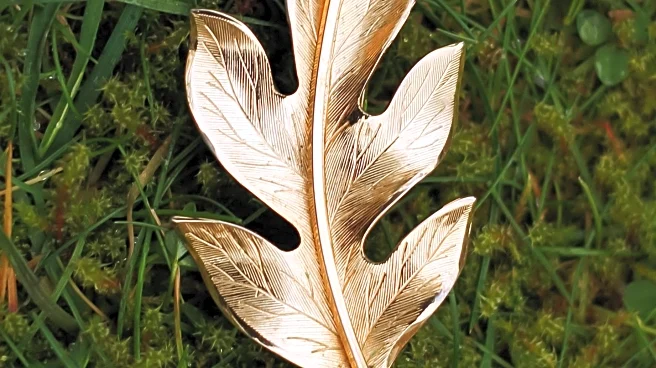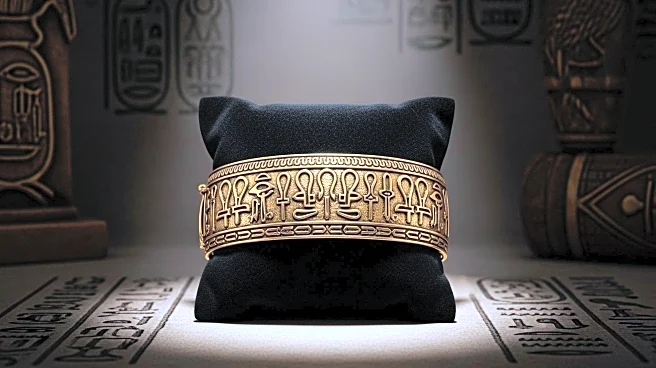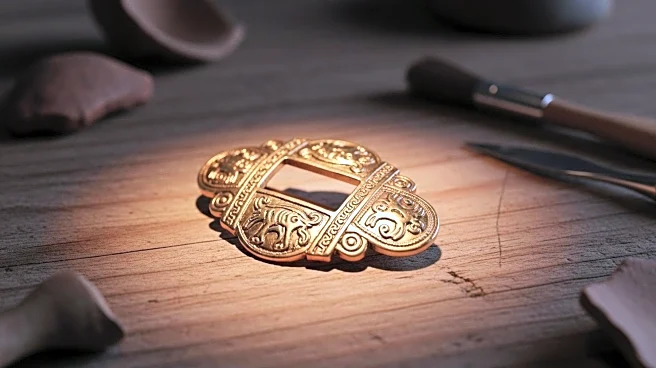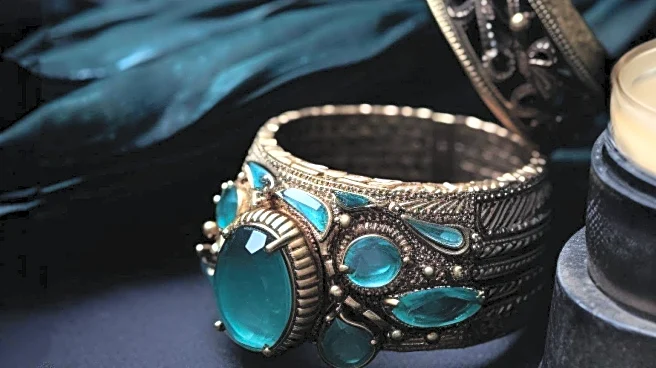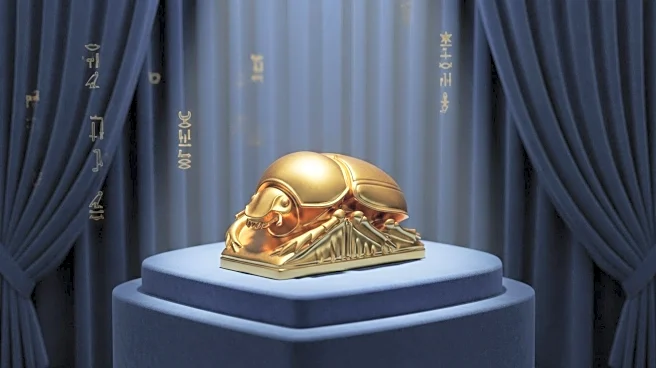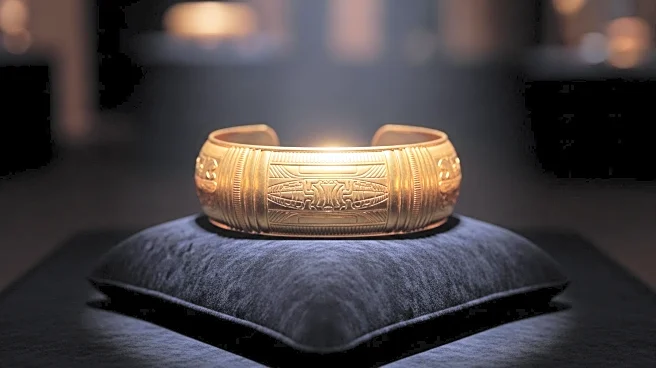What is the story about?
What's Happening?
An Iron Age brooch, crafted from gilded silver, was discovered near Attleborough, Norfolk, by a metal detectorist. The brooch, dating from 30BC to AD60, is considered a rare find and is undergoing the treasure process. Experts suggest it was made in East Anglia and reflects the wealth and status of its owner. The brooch is linked to the Iceni tribe, known for their resistance against Roman invasion. The discovery adds to the understanding of regional distinctiveness in historical settlements and the cultural significance of personal adornments.
Why It's Important?
The discovery of the brooch provides valuable insights into the Iron Age period, particularly the Iceni tribe's cultural practices. It highlights the importance of personal adornments in signaling social status and wealth. The brooch's rarity and craftsmanship offer a glimpse into the artistic and economic capabilities of the era. Such finds contribute to the broader understanding of pre-Roman history in Britain, enriching historical narratives and potentially influencing museum collections and educational resources.
What's Next?
The brooch is currently undergoing the treasure process, with Norwich Castle Museum expressing interest in acquiring it. A coroner's inquest will determine its status as treasure, potentially allowing the museum to preserve and display the artifact. This process may lead to further archaeological interest and exploration in the region, enhancing historical research and public engagement with local heritage.
AI Generated Content
Do you find this article useful?
